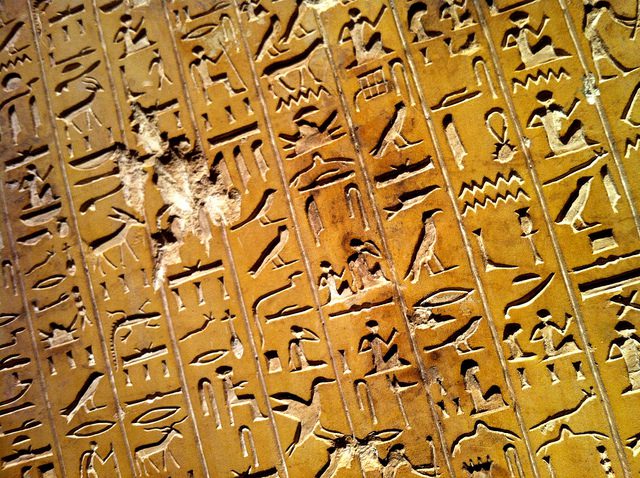|
Getting your Trinity Audio player ready...
|

Today’s logos are following a long tradition, which goes back to primitive designs, hieroglyphs, high-family crests, and ancient religious symbols.
In the Prehistoric Age, primitive people laid the foundation of the graphic arts by painting animals, people, and structures in their caves. Then around the 8000 BC, those cave paintings where being painted on pottery, which was mainly used to communicate cultural, religious, and political information. These concepts were more apparent in the Egyptian culture. Hieroglyphics was a system of formal writing, where images were used in place of words or sounds. The paintings carried a special meaning. Egyptian design used grids, which became an essential starting point for design. It helped effectively keep proportions and ratios, to guarantee a uniform reproduction of the designs.
Coming into the Medieval Age in Europe, two visual languages surfaced: heraldic crests and symbolic signage. A set of colors and shapes would represent a noble family, creating a unique coat of arms. Although the original purpose was to identify friendly versus enemy on the battlefield, the design elements took meaning and helped people identify houses.
By 105 AD, a paper-making industry emerged in China, which then extended to Japan by 610. It was not until 1276 that paper was first made in Italy, after being imported by Arab traders and eventually introduced in England by 1495. In 1440, a German smith by the name of Johannes Gutenberg invented the printing press, causing the production of printed items to become more common. This set the stage for logo design, as authors and printers wished to claim ownership of their works. By the 1600s, the first newspaper surfaced with regular circulation causing it to grow quickly in popularity. Advertisements funded newspapers, giving businesses a reason to set themselves apart from the competition.
During the 1800s, chromolithography, which allowed for mass color printing, was introduced in the U.S. for the first time. It colorfully printed labels, advertisements, branding, and posters, which became a common sight. During the Industrial Revolution, the middle class grew, leading to an increase in the retail and urban sector. With the increase in established businesses, branding was changed by Frank Mason Robinson, who had designed the Coca-Cola logo, in 1885, which is now one of the most recognized brands in the world.
In 1914, Pierre de Coubertin designed the Olympic flag, causing logos to go beyond the commercial market. This return to the roots of the logo, which went back to the tribal identification and cultural communication, supported the concept that logos are not only commercial marks, but have a deeper cultural significance.
The late 1950s, Paul Rand designed the pictographic IBM logo, which was seen by historians as a turning point of logo designs. the ’50s marked a shift in logos, as companies realized how much of an impact logos could have. Designers began to put greater efforts into branding their business instead of branding for identification purposes.
Toward the late half of the 20th century, business owners realized that if they wanted to be remembered, they would to have a logo customers would remember.
In the ’70s, computer-generated imagery and computer-aided drawing technologies were developed bringing sophisticated, digital graphic-design tools to the masses.
Logos allow people to see what is influencing culture now, and they are a trace of the past and progress, the ability to represent oneself, and things that matter to people symbolically.
Written by Ismael Balleydier
Edited by Jeanette Smith
Sources:
Smashing Magazine: The history of logos and logo design
99 Design: The history of logos
Design Hill: The history and evolution of logo design
Featured and Top Image Courtesy of Nate Swart’s Flickr Page – Creative Commons License



